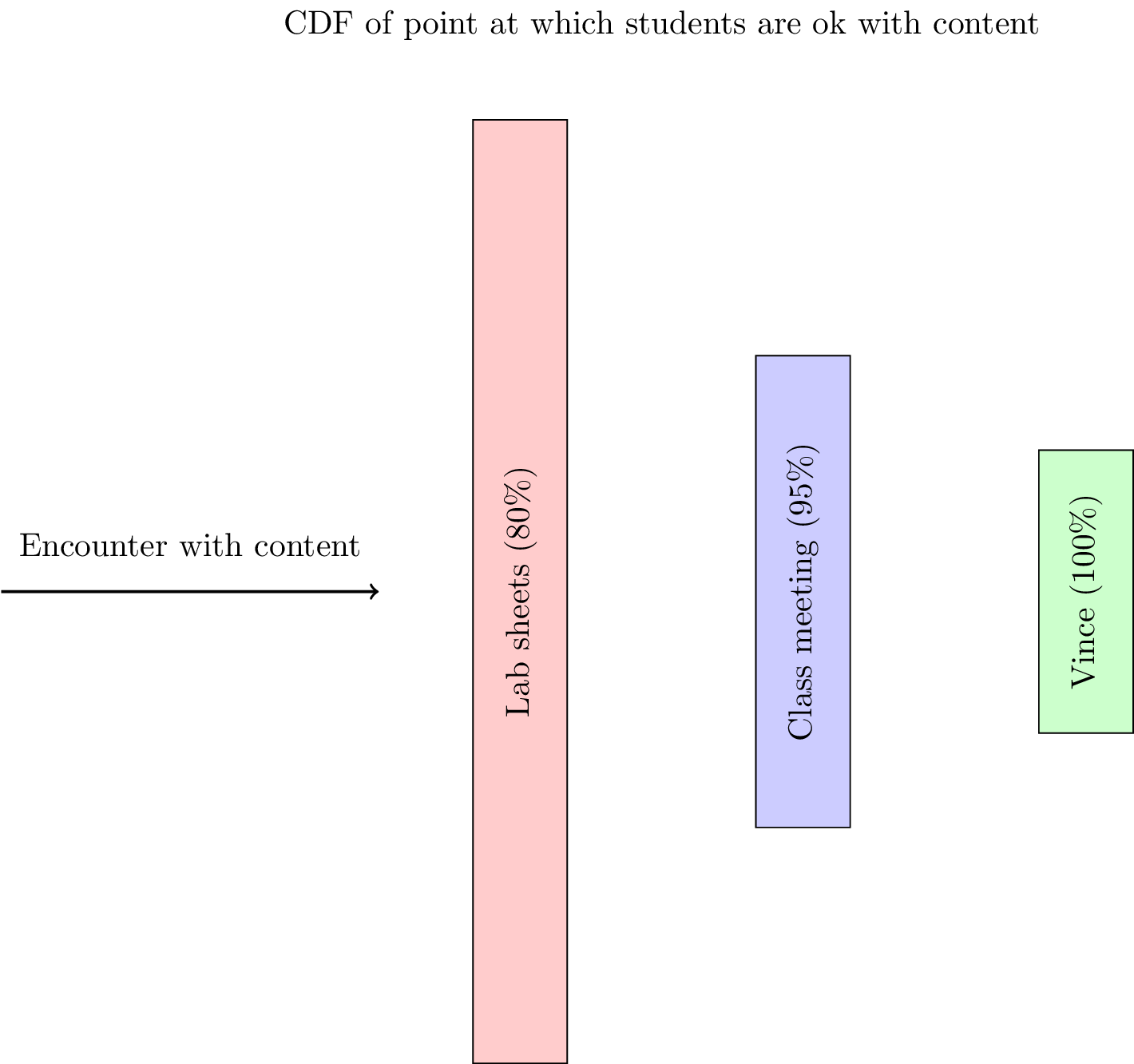Scaffolding tutors and how to better prepare for different pedagogies
Here’s my third reflective post for Imogen Dunne’s final year project (you can find the first here and the second here.
The course is now on the final straight as students have finished the class test which is always a bit of a milestone as they now begin to really individualise their learning experience (working on individually chosen projects etc…). As we get to this point I’ve got 3 specific things I’ve been thinking about:
-
Class test performance
With over half of the scripts marked it seems like students have done quite well on what is a difficult piece of assessment. It seems that the performance is overall better than last year but it’s too early to try and guess as to why that is.
-
Scaffolding undergraduate tutors
I use second year students to tutor in the lab sessions. They are all students who did the course last year. I don’t think I’ve done the best job explaining the roles of the tutors and this is something I need to get right next year. I still am very excited about using undergraduate tutors as I think it’s a brilliant experience for them as it continues their learning. The other (super important reason) is that I think this peer level of instruction is undoubtedly of benefit to the students on the course (if this wasn’t a quick rough drop of thoughts I’d be able to find a large quantity of resources relevant to this).
The flipped approach used requires the tutoring to be very light touch, and more about giving feedback than giving ‘help’. I didn’t do the best job of explaining this as some undergraduate tutors felt it was their job to ‘get students code to work’. I’ll probably run a bit more of an ‘expansive’ training session with closer shadowing at the start.
All the tutors have done a brilliant job and I’m very pleased, I just have to think carefully about how to best ‘scaffold’ and support them.
-
Communicating the different pedagogy
Some students were questioning the timing of my office hours: they are after the class meeting (which is in turn after the lab sessions). Whilst most students are on board and understand I think that the fact that a couple of students didn’t understand this shows that I didn’t do the best job of communicating the ideas.
Involving the students in a discussion about the pedagogy they are experiencing is something I think is very important (especially when using something they might not have experienced before). As such I have tried and continue to try to talk about this throughout my interactions with students (from 1 to 1 meetings all the way to class meetings) but perhaps I could do more. Perhaps even just showing a picture like this would be helpful:

That shows the reason why I have my class test at the end of a week, the idea being that most students will be happy with content through labs, some will be happy after the class meeting and a small amount will require specific time with me to help them through. This goes back to the premise of a flipped environment which aims to make best use of contact time: my class meetings are meant for us to further understanding and go towards the tip of Bloom’s taxonomy but also address specific difficulties.
On a whole I’m very happy with how this class is going, I feel that most students are engaging fully with the course and seem to be enjoying it. I also feel that I’ve gotten certain things a bit better than last year this year which could be an explanation of the slightly better mark in the class test (I still have 70 scripts to mark this weekend so it’s probably too early to tell).
One particularly nice piece of feedback is how students like the new class website (jekyll for the win!) and in particular have enjoyed the use of a comment system on all pages: it’s always nice to have that permanent record of discussions I’m having with the students which in turn could help other students. Ideally the discussion would be peer to peer but that hasn’t happened much this year (mainly me answering queries) but it has happened once which I’m happy about (small steps, big wins) :)